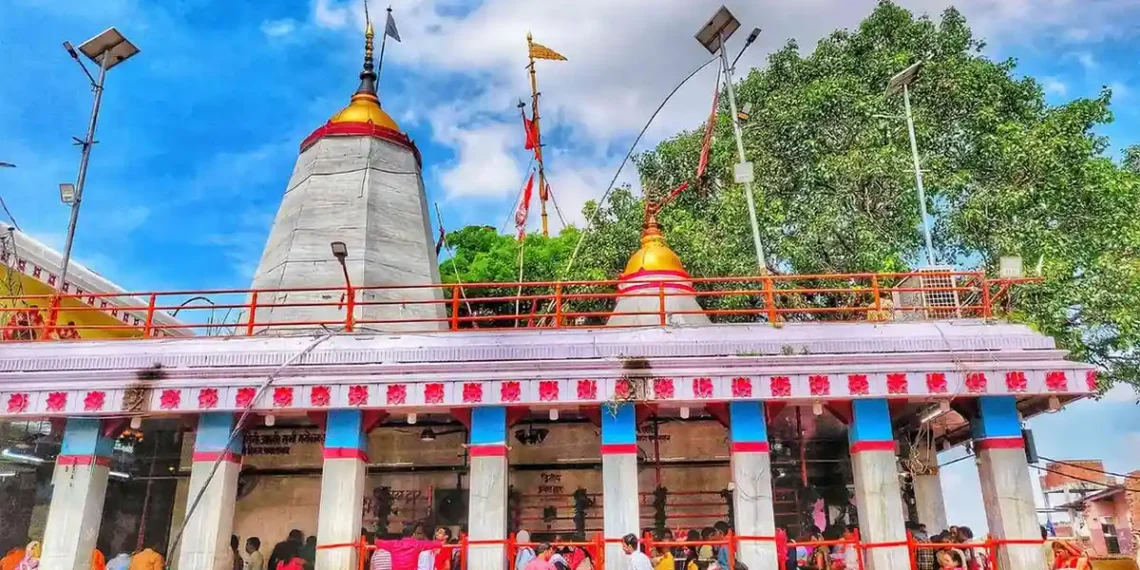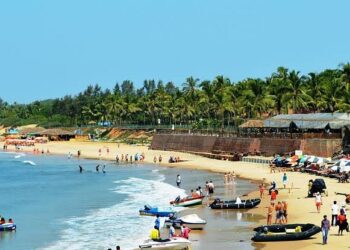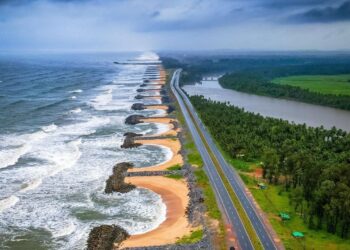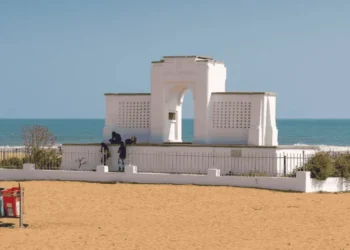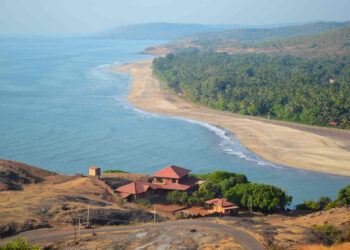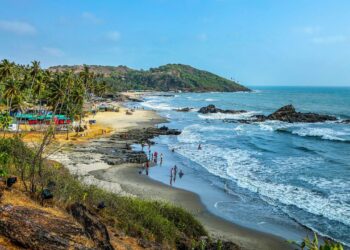In Vindhyachal, Uttar Pradesh, near the Ganga River in the Mirzapur district, the Maa Vindhyavasini Temple is a sacred place where people come to worship Goddess Vindhyavasini, a fierce form of Goddess Durga. It is one of the Shakti Pitha temples in India.
History of Maa Vindhyavasini Temple
The Maa Vindhyavasini Temple was made around the 8th century by local kings of the Gahadavala dynasty. Vindhyachal, known as a Shakti Peetha in the Devi Mahatmya, is a sacred town tied to Hindu tales. Local talk says the temple was built to honor Vindhyavasini, who appeared in the Vindhya hills to protect devotees. They say the goddess’s power settled here after slaying demons.
Records from 1100 CE mention fixes by King Bhoja, and the temple is noted in the Skanda Purana’s Vindhya Khanda. The temple sits on a 50-foot hill, reached by 48 stone steps. In the 13th century, it was harmed by Islamic raiders, but the Maratha rulers, like the Holkars, rebuilt it in the 1700s. After 1947, the state trust took charge. Repairs in the 1970s helped keep the old look of the temple as it is.
Legends of Maa Vindhyavasini Temple
The temple holds many stories tied to Goddess Vindhyavasini. One main story says that Vindhyavasini, a form of Durga, was born here to kill the demon Mahishasura. People believe she still guards Vindhyachal. Praying here with a true heart brings her blessings and removes troubles, as she is known for her power and mercy in the Devi Mahatmya.
According to sacred texts, Vindhyachal is believed to be the abode of Mother Goddess Durga. Close to this place, there are many temples dedicated to other deities, including the well-known Ashtabhuji Devi Temple and Kali Khoh Temple. It is said that after defeating the demon Mahishasura, the goddess chose to reside here. Thousands of devotees visit these temples year-round, with the number increasing greatly during the 9 days Navaratri festival. During this time, the city is adorned with lamps and flowers, adding to the festive spirit. The temple’s main deity, Vindhyavasini, derives her name from the Vindhya hills, meaning “She who dwells in Vindhya.”
Another tale says the idol was placed by Adi Shankaracharya who saw the goddess in a vision in the 8th century. Some say a hidden cave under the hill, now closed, holds her divine presence. The temple finds mention in the Durga Saptashati, where it is described that Goddess Durga was born to Yashoda on the very night Krishna was born. When Kansa, the king of Mathura, attempted to kill the infant by smashing her against a stone, she escaped his grasp and transformed into her divine goddess form.
Some stories say chanting the Durga Saptashati seven times here brings strength and peace. Others feel the hill’s air holds the goddess’s power. During Navratri, people believe Vindhyavasini visits the Ashtabhuja Temple, 2 km away, to rest.
Architecture of Maa Vindhyavasini Temple
The Maa Vindhyavasini Temple stands on one acre atop a hill, built in simple North Indian style. The temple’s main dome is low and carved in black stone, showing Durga’s lion, tridents, and lotus flowers. Inside, the main idol of Vindhyavasini is 4 feet tall, covered in red sindoor, holding a trident in one hand and a lotus in the other. A 2-foot idol of Saraswati, her sister, stands nearby, lit by oil lamps. The main hall has four stone pillars, carved with Durga’s weapons and symbols. In the courtyard, small shrines stand for Kali, Lakshmi, and Ganesh: Kali Shrine – Shows her with a skull, symbol of power, Lakshmi Shrine – From the year 1200, shows her with coins for wealth, Ganesh Shrine – Has Ganesh with a modak, for wisdom.
Rituals and Festivals
The temple celebrates festivals Navratri, in April and October, is big, with nine-day chants and milk pujas. Durga Ashtami, in October, honors Vindhyavasini with lamps. Shravan, in July or August, sees daily idol baths with water.Durga Ashtami’s chants fill the yard with faith. The Ganga ghat, said to clean sins, draws crowds at festivals. Devotees offer coconut, sindoor, red cloth, and marigold flowers. Some chant the Durga Saptashati nine times, taking 4 hours, for special prayers. Charity meals feed 5,000–10,000 during festivals.
Information for Travelers
Hours: Open daily, 4:00 AM – 9:00 PM.
Entry: Free. Special prayer offerings cost ₹50–₹300.
Dress Code: Wear clothes covering shoulders and knees. Women usually wear sarees or suits, men wear kurtas.
Photography: Not allowed inside the inner sanctum.
How to Get There:
Air: Varanasi Airport, 65 km away, links to Delhi (1.5 hours), Lucknow (1 hour), Mumbai (2 hours).
Train: Vindhyachal Station, 2 km away, links to Varanasi (1 hour), Allahabad (2 hours). Autos cost ₹30–60.
Road: Vindhyachal is 70 km from Varanasi, 80 km from Allahabad on NH 2. Buses from Varanasi reach Vindhyachal. Autos from the town center are also available.
Best Time to Visit: October to March is cool, 15–25°C. Weekdays are quiet. Navratri’s full, with 30,000–60,000 devotees, so plan early.
Nearby Attractions
Ashtabhuja Temple (2 km) – Durga shrine tied to the goddess’s rest.
Kali Khoh Temple (3 km) – Cave temple of Goddess Kali, from 1000 CE.
Sita Kund (4 km) – Sacred pond where Sita is said to have bathed.
Ganga River Ghat (1 km) – Ritual bathing spot.
